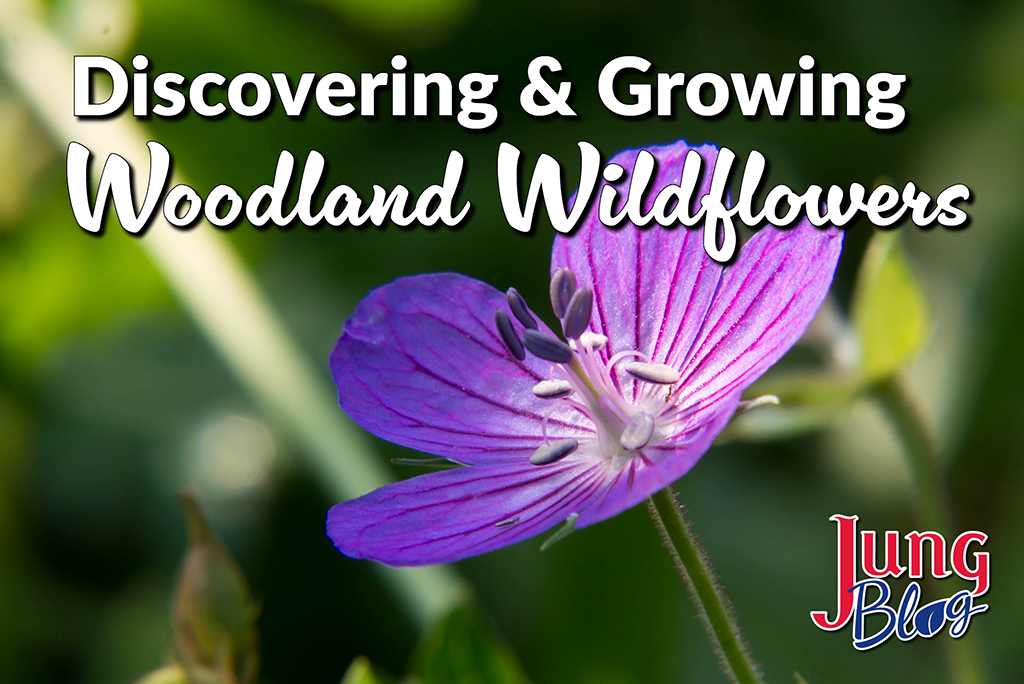
There are many plants we can talk about this time of year, so let’s take a moment to enjoy the early-season natives that are filling the forests with color. Their appearance is brief, but these beauties are a great source of joy after a long winter. One of my early childhood memories is traveling to our family cabin in spring and seeing carpets of trilliums covering the forests along the highway. I encourage you to explore your local forests and look for woodland wildflowers. And guess what? You can grow these plants at home too!
What Are Woodland Wildflowers?
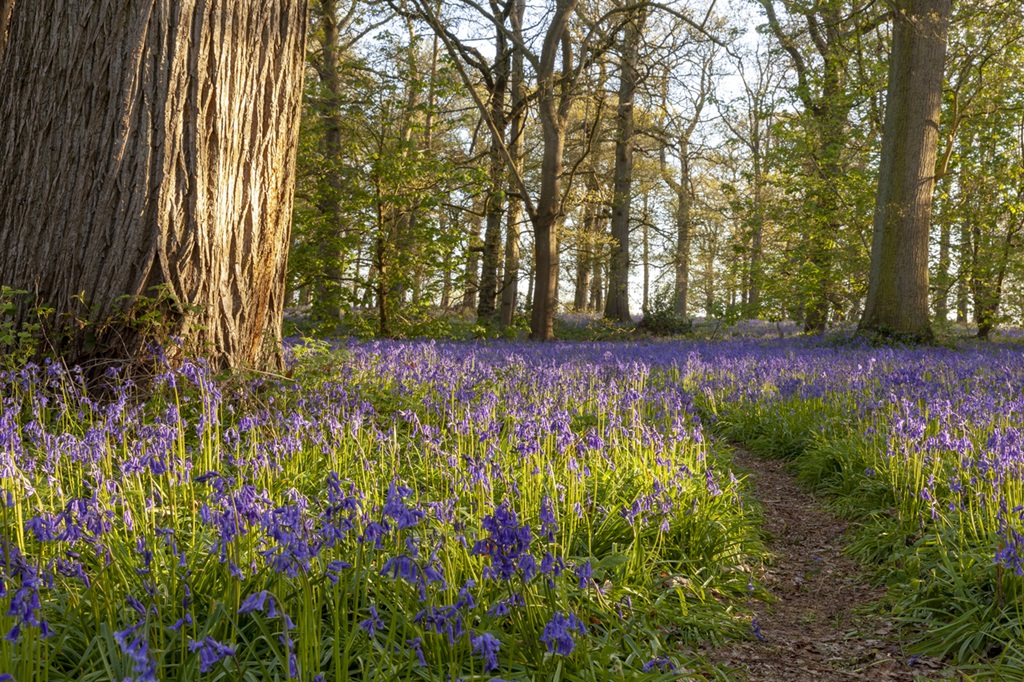
This term refers to native plants that grow and bloom in forests, typically in spring. Another name for many of these plants is spring ephemerals. These plants emerge in early spring and bloom before the leaves appear on the trees, allowing them to soak up sunlight and build energy for the next year. After the blooms fade, spring ephemerals go dormant in summer. A few examples are Virginia Bluebells, Dutchman’s Breeches, and Trilliums. Here’s another reason to grow them: Pollinators! These plants are a great source of early-season nectar.
How To Grow Woodland Wildflowers
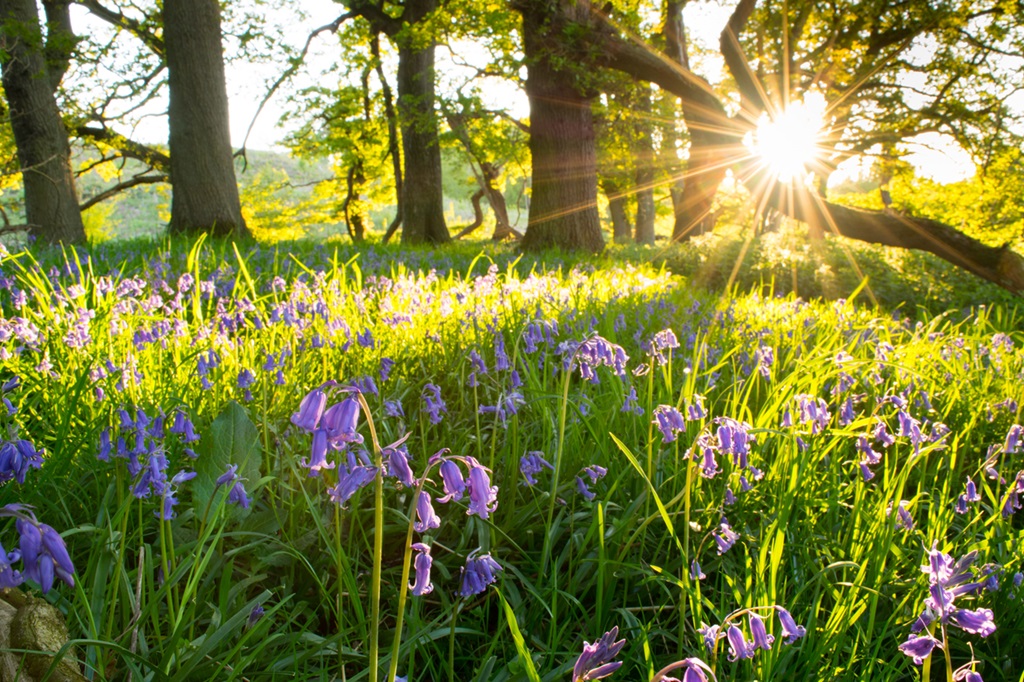
These plants are easy to grow but have a few requirements to thrive in the landscape. If you go hiking in spring, you may notice an abundance of wildflowers in certain areas, while other parts of the forest have none. Woodland wildflowers thrive in areas with moist, fertile soil and part-full shade in summer. In nature, these areas are usually in deciduous forests that receive sunlight in early spring before the trees leaf out in summer.
Special Tips For Growing Woodland Wildflowers
In the garden, these plants grow best in a similar environment, so here are a few tips to grow these plants in your garden:
- Amend your soil if needed. Adding compost and other sources of organic matter will allow your soil to retain moisture and nutrients. If you’re unsure about the quality of your soil, consider sending a sample to your local extension office.
- Mix these plants with other perennials for more blooms and texture. Woodland wildflowers bloom for a short time, so add other plants around them to provide season-long interest. These plants look great alongside ferns, hosta, and columbine.
- Think about visibility. Plant these wildflowers in prominent areas of your landscape, near a walking path, or in the front yard so they won’t be missed. Adding groups of plants will also help make a larger impact.
- If you don’t have a significant source of shade, consider planting wildflowers under large shrubs or small trees.
- Propagate for more blooms. Summer is a great time to divide wildflowers as they’re going dormant. Just wait until the leaves start dying back to give the plants energy for next year. If you divide the plants while dormant, remember to mark their location so you can find them.
If you order online, many of these plants arrive as bareroot plants, so keeping the roots hydrated is essential until planting time.
Types Of Woodland Wildflowers
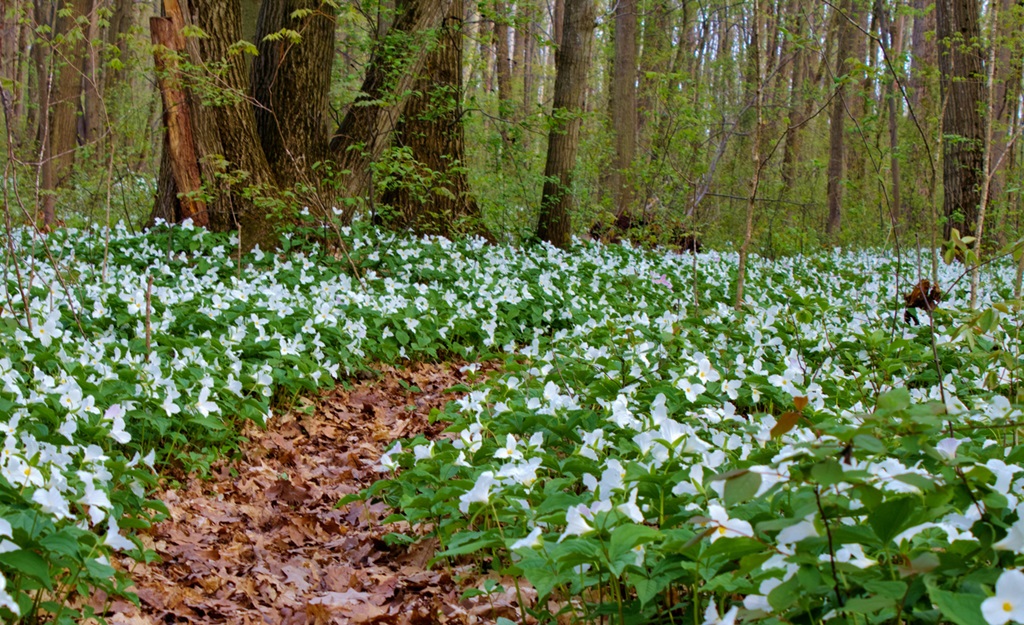
Let’s explore the different types of wildflowers and what makes each unique. Please note: These species should never be removed from the wild. Always source them from a reputable nursery.
Virginia Bluebells
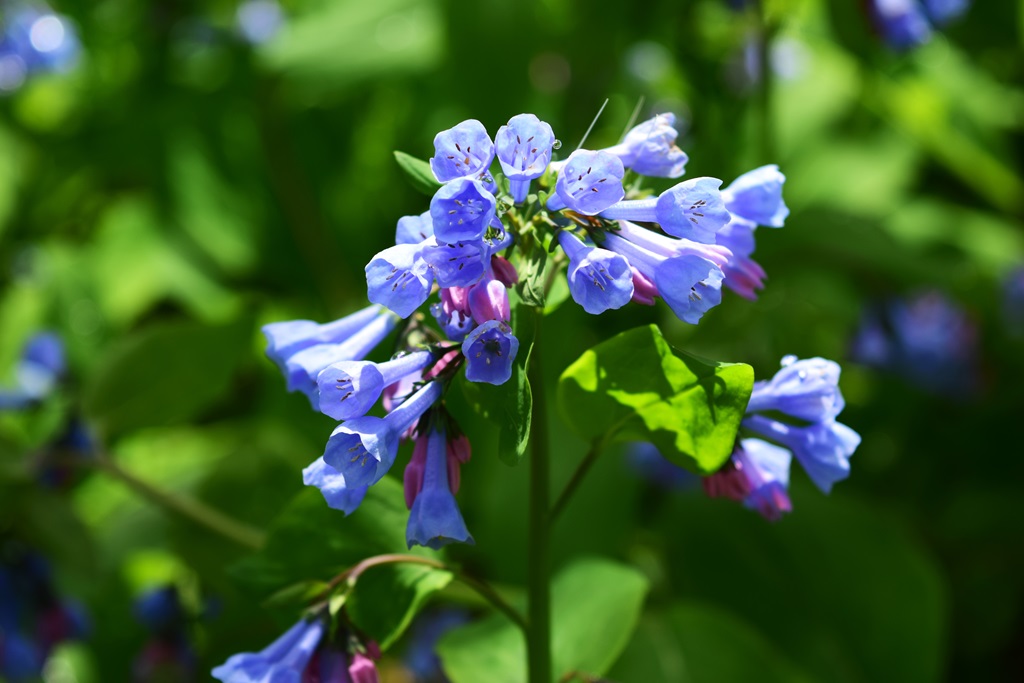
Let’s face it. Blue is a hard color to find among flowers, and yet Virginia bluebells have no trouble producing this unique color. The lush green foliage emerges in early spring to reveal pink buds that open into dainty blue flowers. Over time, this delicate-looking species spreads to form a mass of spring color. Virginia bluebells grow best in moist, slightly acidic soil.
Trillium
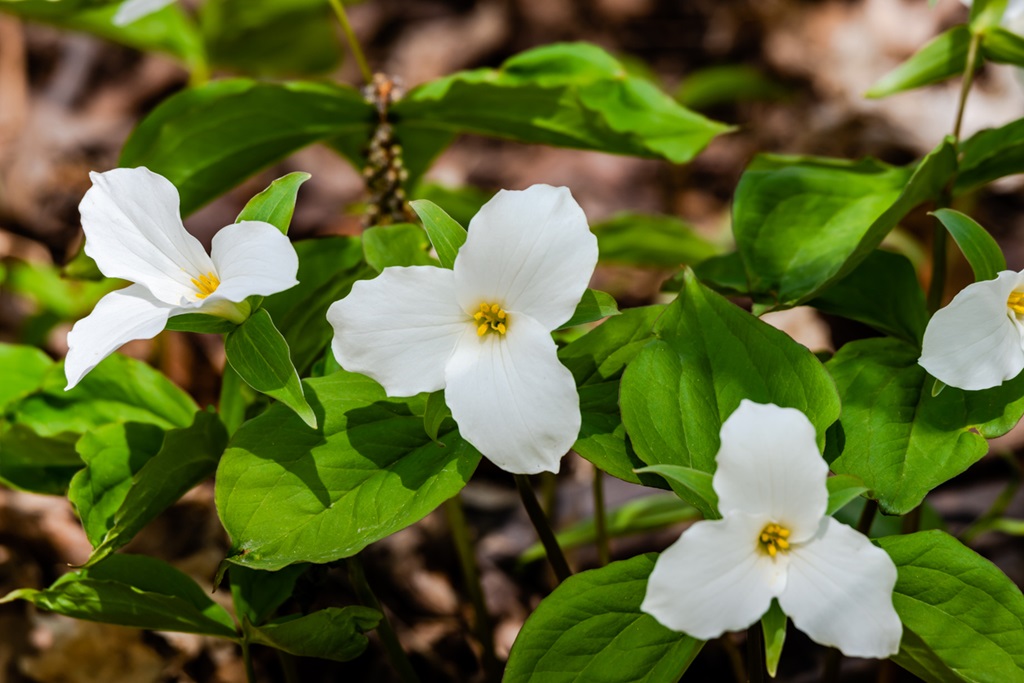
This distinct wildflower is a spring favorite with three flower petals and three leaves. Its large blooms are a sight to see, especially in group plantings. Many trilliums have white blooms, but you can find other colors, like purple and yellow. These spread slowly to form large clumps. Like many wildflowers, they prefer slightly acidic, moist soil in the shade.
Dutchman’s Breeches
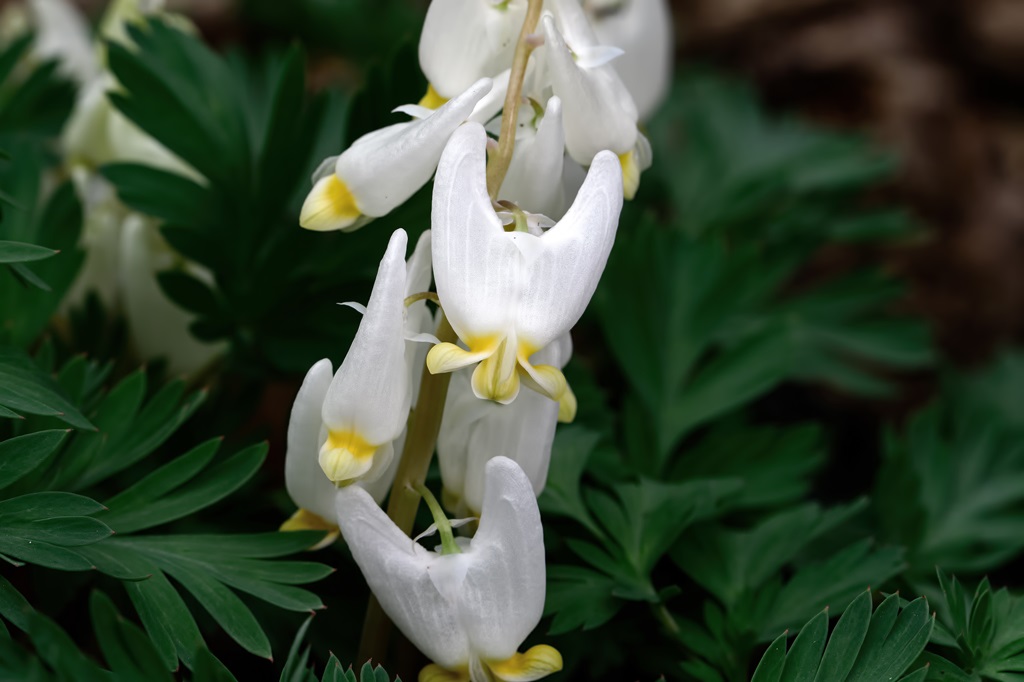
Many gardeners know the common bleeding heart that fills the garden with pink or white blooms in spring, but there’s also a native bleeding heart called dutchman’s breeches. Named for its unusual flowers, this plant is an excellent spring groundcover that blooms before the common bleeding heart. It often spreads by seed (though not aggressively) and can be found in unusual places, like rock crevices or between stepping stones.
Jack in the Pulpit
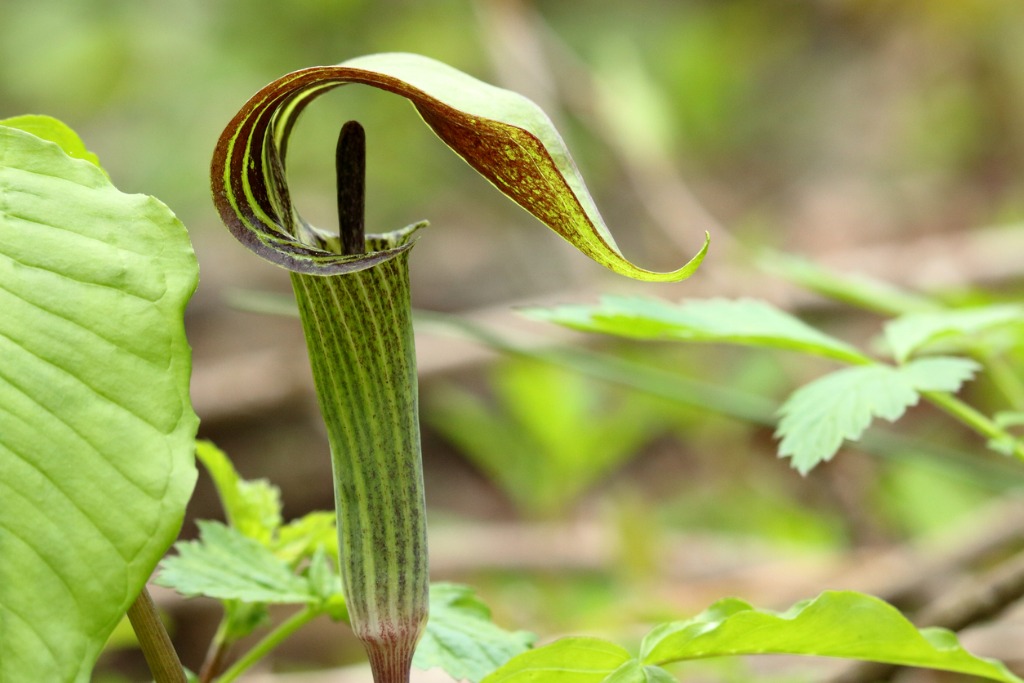
You won’t find many plants with flowers like this. Jack in the Pulpit forms a green-purple bloom with a hooded pitcher and curved tongue. This unusual flower appears shortly after the leaves emerge in spring. While it blooms early, Jack in the Pulpit also forms bright red berries that mature in late summer.
Bloodroot
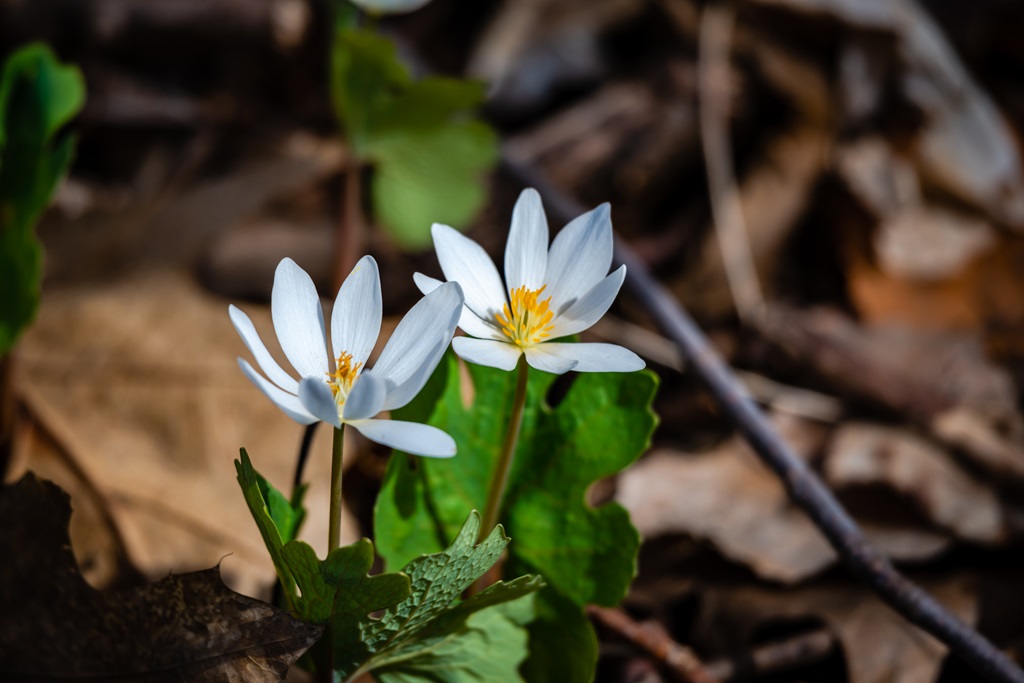
This small plant is named for its colorful roots, but the flowers tend to steal the show. Bloodroot flowers shortly after emerging and can be recognized by its leaves that wrap around the stem and flower bud. As the flowers continue blooming, the leaves unwrap and grow larger until early summer; the plant goes dormant.
Shooting Stars
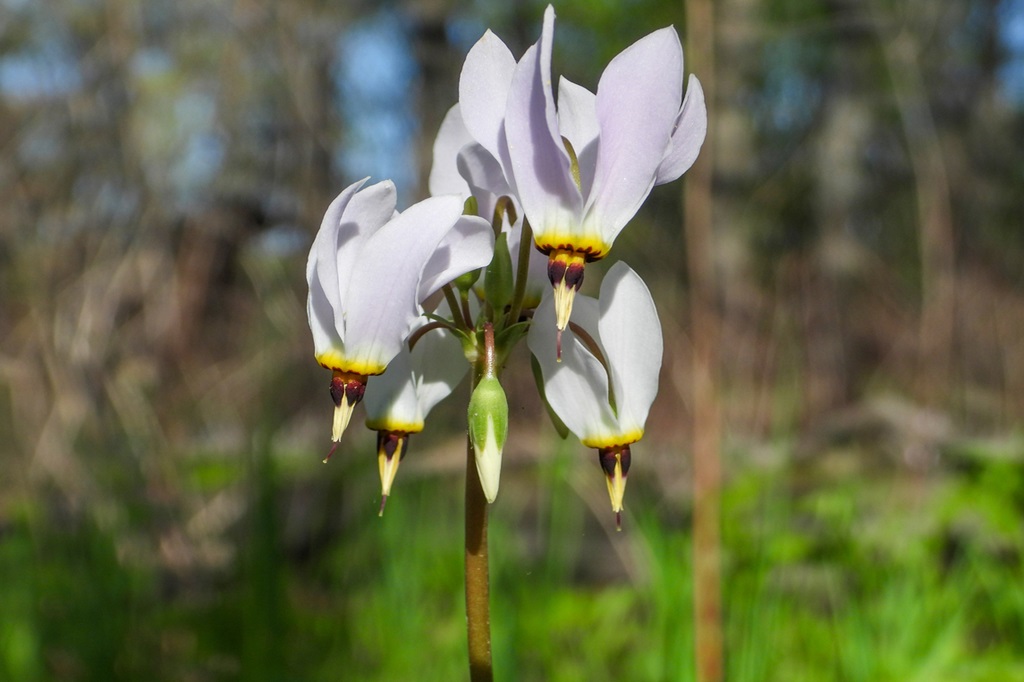
With purplish pink blooms that resemble shooting stars, this plant provides a pop of color in the spring garden. This species forms a long stem with clusters of 10-20 flowers that open to reveal downward-facing buds with pointed anthers. It stands out when mixed with other groundcovers, like vinca or sweet woodruff.
Wild Geranium
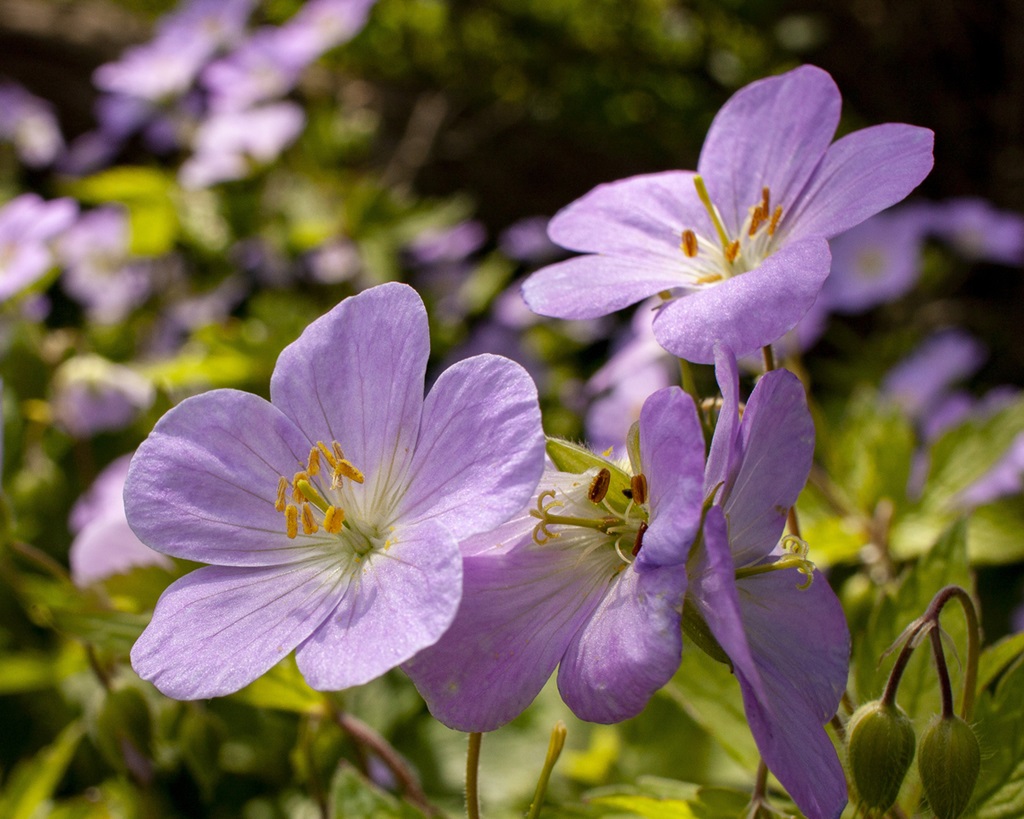
This native perennial is common across eastern North America. Wild Geranium forms a lush ground cover with charming pink blooms in late spring. In the garden, it’s an excellent choice for part-shade areas. With continuous moisture, these plants will remain green all summer, making them a wonderful addition to woodland gardens and other areas with shade. Mix with other shade-loving perennials to provide contrast to the attractive lobed foliage.

As you enjoy the warmer weather, think of ways to use these beautiful and unique plants in your garden. They won’t be here for long, but they’re such a welcome sight in spring, and who knows, maybe you’ll find a new favorite plant!
Other Recommended Reading
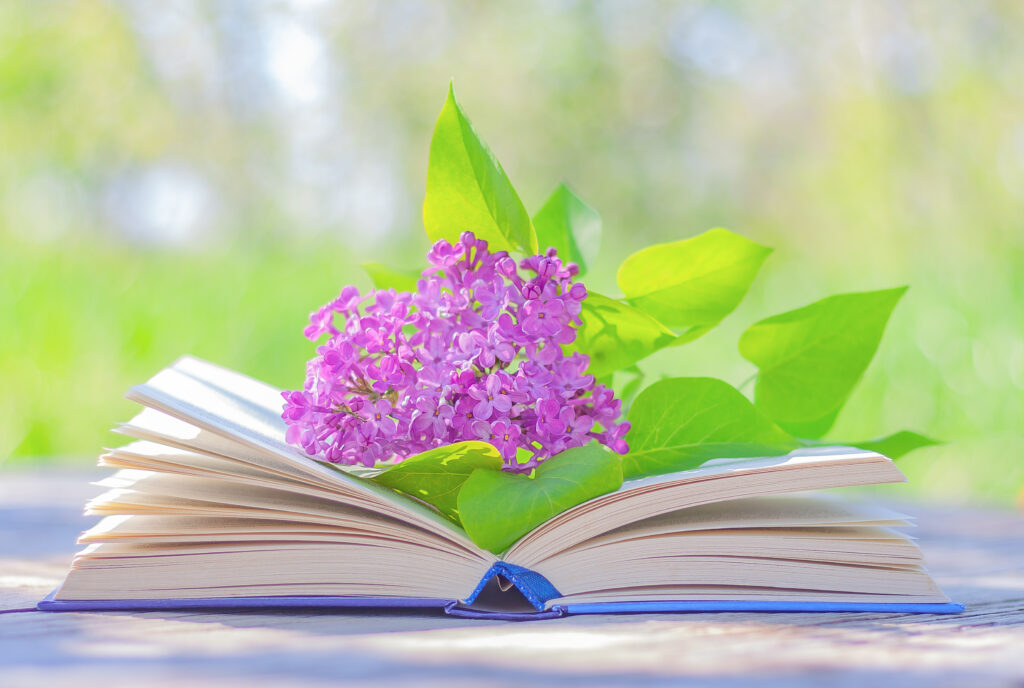
- Create A Monarch-Friendly Flower Garden
- Bee Gardens: Cultivating Pollinator Paradises
- Bee Kind Gardening – A Guide To Plant & Pollinator Balance
- 15 Best Plants for Pollinators
- How to Create a Bird-Friendly Garden

At Jung Seed Co, we strive to be your go-to guide for all your gardening needs. Our YouTube channel The Garden Doctor by Dick Zondag is where he provides gardening tips for all levels of gardeners. When you need reliable gardening advice, turn to the trusted experts at Jung.
View our new catalog online or browse our website for your gardening favorites. To receive info on new products, exclusive deals, and specials, be sure to sign up for our weekly email. Join our Facebook page, to discuss all things gardening!
About the Author: Matthew Olson is a professional horticulturist and garden writer. He has a bachelor’s degree in horticulture from UW-River Falls and is a certified professional with the Minnesota Nursery and Landscape Association. His enthusiasm for plants and the outdoors brought him to the green industry. He regularly writes articles about gardening for both gardeners and industry professionals. He can be reached at matt@mattolsonhorticulture.com.